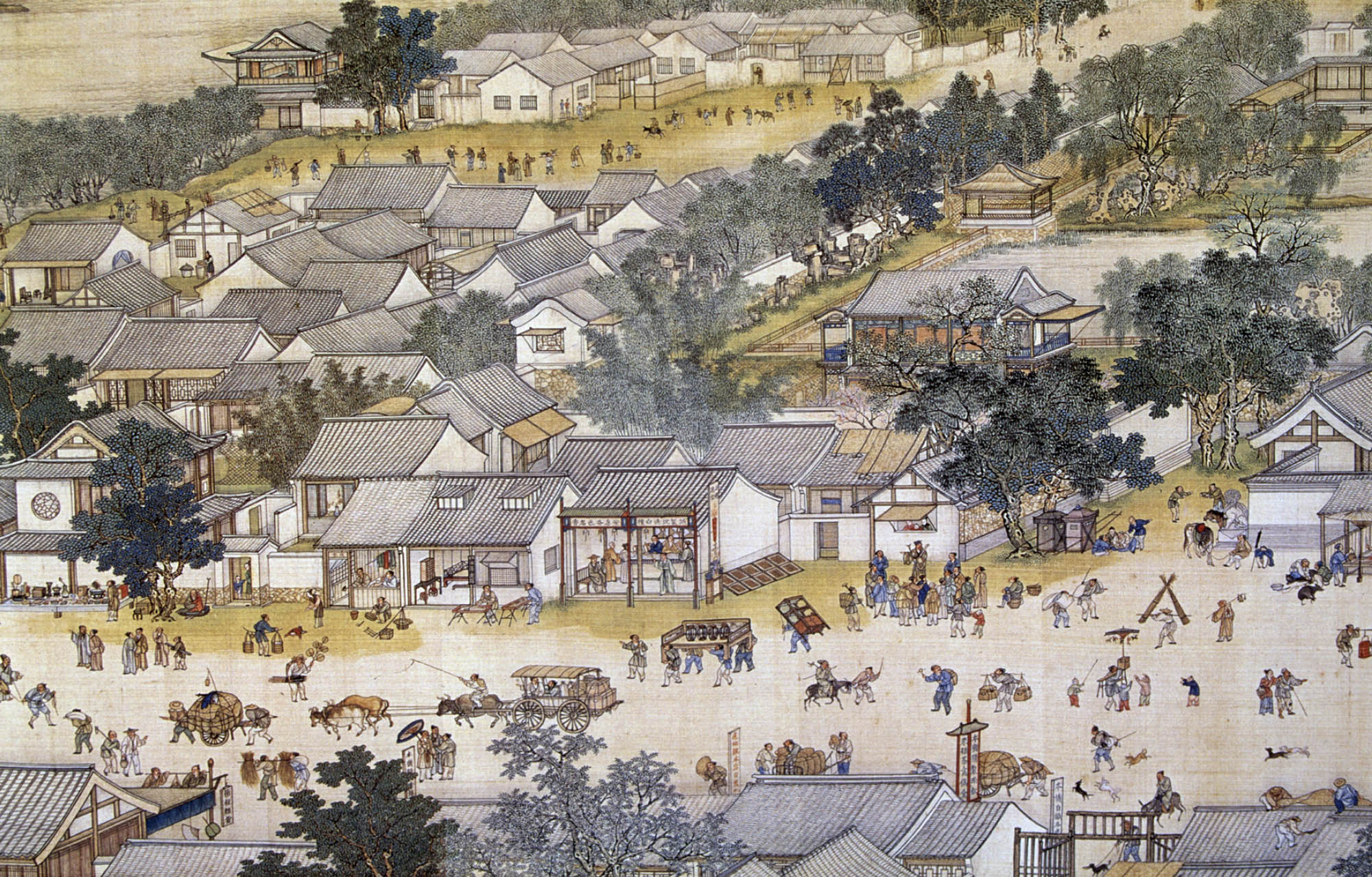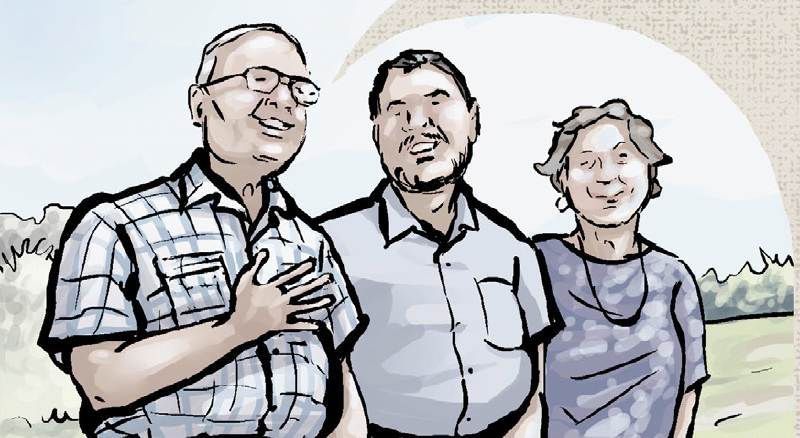History Themes
Teacher Resources
Driving Question: How do the six themes of AP® World History help us make sense of the past?
Where does history begin? That’s up to you, the historian! In this course, you’ll uncover different narratives, challenge perspectives, and see how one event can have many stories. Sharpen your evidence-analysis skills—useful far beyond history class—and learn about the six themes of AP World History.
Learning Objectives:
- Recognize how historians create narratives to explain historical events and processes.
- Examine how historians frame history by creating narratives of different scales of time and space.
- Learn about the six AP themes and how to identify them.
Vocab Terms:
- belief system
- bureaucracy
- dynasty
- hierarchy
- innovation
- state
- tribute
Opener: History Themes
To teach this lesson step, refer to page 2 of Lesson 1.0 Teaching Guide.
Our Openers and Closers Guide will provide more information about these short, but important, activities at the beginning and end of each lesson.
New to teaching about AP® World History? Join the OER Project Community Forum.
Ever heard a fable as a kid? Chances are, it had talking animals and a life lesson baked in. But guess what? Fables aren’t just for kids—they’re a powerful way to learn at any age!
Getting to Know the AP® Themes
To teach this lesson step, refer to page 4 of Lesson 1.0 Teaching Guide.
You’ve been introduced to PIECES but now dig a little deeper into the six AP themes.
-
Guiding Questions
-
Before you read
Preview the questions below, and then skim the article. Be sure to look at the section headings and any images.
While you read
Look for answers to these questions:
- What change over time is suggested by the political knowledge of the two porridge-makers in this article, as described by the political (P) theme?
- How would you describe changes in innovation (I) over time, as described in this article?
- How are the economies (E) of the two porridge-makers apparently different?
- Based on their activities, how can we describe the differences in culture (C) of the porridge-makers?
After you read
Respond to the following questions:
- How can we explain the differences between the porridges cooked in thirteenth-century China and twenty-first-century South Africa using the environment (E) theme?
- How would you describe the differences between the social interactions and organizations (S) of the two porridge-makers?
- If you analyze your own life through the six themes in this article, what might you say about yourself under each theme?
Meet the Themes
To teach this lesson step, refer to page 5 of Lesson 1.0 Teaching Guide.
This is the first video in this course, so you might want to check out our Video Guide.
Teachers love the AP Themes to PIECES: check out this thread, AP Themes Introduction!
Noticing recurring ideas or patterns—or themes—is very important to understanding the world around us. This understanding of themes allows us to put everything into perspective and make sense of various (and sometimes seemingly unrelated) events.
-
Guiding Questions
-
Before you watch
Preview the questions below, and then review the transcript.
While you watch
Look for answers to these questions:
- How do historians use themes?
- What’s one way that our environments shape human societies?
- How does Mansa Musa’s pilgrimage connect to the theme of cultural developments and interactions? What other themes does the story of Mansa Musa connect to?
- Why did Japanese merchants anger the aristocracy, and what was the result of this dynamic?
- Who do we have to thank for eyeglasses and contact lenses?
- To which theme does Rachel’s example of the Aztec pochteca belong?
After you watch
Respond to the following prompt in 2-3 sentences: Suggest a seventh theme that you’d propose introducing to the AP® World History exam. Why is the theme important? What’s one example you’d use to explain the theme? You don’t have to know anything about history to do this. Feel free to pick a theme that’s meaningful in your own life.
Key Ideas
Unit 1 Overview
To teach this lesson step, refer to page 6 of Lesson 1.0 Teaching Guide.
Imagine living during a time on the brink of enormous changes, a time when the air was rich with the exchange of ideas from every corner. Welcome to the world of 1200 CE and the Islamic Golden Age!
-
Guiding Questions
-
Before you watch
Preview the questions below, and then review the transcript.
While you watch
Look for answers to these questions:
- What was the Islamic Golden Age?
- What advantage is there to starting a course in the year 1200 CE?
- Who was Nasir al-Din al-Tusi?
- What does the story of al-Tusi and the Islamic Golden Age teach us about the connections linking the political, innovation, and culture themes?
After you watch
Respond to the following questions:
- After watching this video, which theme will be most important in the rest of Unit 1? Provide evidence to support your claim.
- Can you think of an example of this type of relationship from our world today?
Key Ideas
Unit 1 Introduction: The Global Tapestry
To teach this lesson step, refer to page 7 of Lesson 1.0 Teaching Guide.
Check out our Reading Guide to learn about the Three-Step Reading approach.
Sometimes, what seems to be a small, inconsequential difference can have massive consequences. What could the use (or nonuse) of a hyphen teach us about interpretation and understanding? Explore this question while also learning the Three-Step Reading Strategy.
-
Guiding Questions
-
Before you read
Preview the questions below, and then skim the article. Be sure to look at the section headings and any images.
While you read
Look for answers to these questions:
- What is the difference between “world-systems” (with a hyphen and an “s”) and “world system” (without a hyphen, no “s”)?
- Why does the author say that the world from 1200 to 1450 seemed like “worlds apart”?
- How does the author characterize different regions of Afro-Eurasia? What were some characteristics of each region?
- Why did distant, seemingly separate parts of the world nevertheless share many similarities? What are the two possibilities the author provides?
After you read
Respond to the following questions:
- What are the similarities and differences in how states were organized in the period from 1200 to 1450 CE?
- The author explains a seemingly silly debate about the use of a hyphen (and an “s”) in world-systems. But he also mentions that this is also a meaningful debate. Do you agree that it’s meaningful? Why or why not?
- The author outlines two different lenses for examining the world from 1200 to 1450: as a world of similarities and connections, or as a world of differences and separations. How do you think your understanding of the world changes depending on which of these lenses you use?
Introduction to Three-Step Reading for Graphic Biographies
To teach this lesson step, refer to page 9 of Lesson 1.0 Teaching Guide.
New to comics in the classroom? Check out our Graphic Biographies Guide for tips.
Wouldn’t it be cool to read a comic instead of a typical text excerpt? Well, now you can! Graphic biographies will give you a whole new way to learn about history, one panel at a time!
-
Guiding Questions
-
Before you read
Preview the questions below, and then skim the comic, paying attention to things like prominent colors, shapes, and types of text and fonts. How do you know where to start and in which direction to read? What’s in the gutters (the space between panels)? Who or what is the focus of the comic?
While you read
Look for answers to these questions:
- What factors may have influenced the different ways Wayne and Daisy remembered the story of Zalman’s finger?
- What factors influenced Trevor’s analysis of these stories?
- What evidence does Trevor cite for how Zalman may have lost his finger?
After you read
Respond to the following questions:
- “Memory and history often serve different purposes and have different perspectives,” is the last line of the graphic biography. What do you think it means?
- If you had to decide which story about Zalman’s lost finger is most historically accurate, which version would you choose?
Closer: History Themes
To teach this lesson step, refer to page 10 of Lesson 1.0 Teaching Guide.
Have you noticed any patterns in what you’ve learned in this lesson? Grouping ideas under themes deepens understanding—and makes it a lot easier to remember what you’ve learned, too!








